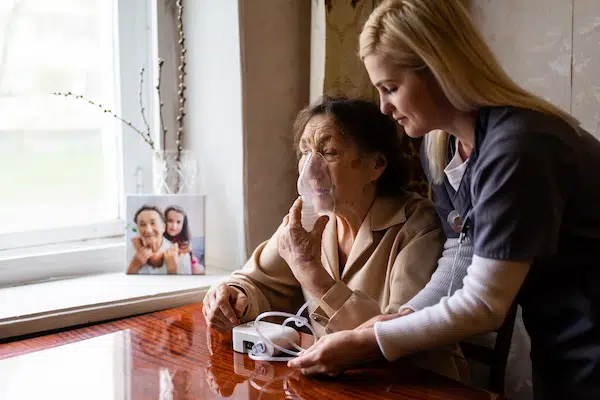What are the differences between a home help and a home help?
Both the home help and the home care worker play a crucial role in supporting people who need assistance at home. However, their missions and skills differ significantly. In this article, we will explore their respective roles, the contexts of intervention, as well as the training required for each of these professions.
The home help: a multifaceted profession
Roles and missions of the home help
The main mission of the home help is to support the elderly , disabled or people suffering from loss of autonomy in their daily lives. This professional helps to accomplish essential tasks that become difficult to do alone, such as help with washing , dressing, and even certain basic care .
In addition to these physical tasks, the home help is also there to provide social support . This daily assistance is vital to maintain social ties and avoid isolation.
The skills required
To practice this profession, several skills are essential. First of all, excellent listening and communication skills are essential. The home help must know how to be empathetic while maintaining an adequate professional distance.
Next, you need to have solid knowledge of basic care . This includes not only technical gestures but also a mastery of hygiene and safety standards. In addition, notions of dietetics can be useful to help prepare balanced meals adapted to the specific needs of the beneficiaries.
Training of the care assistant
The profession of home help generally requires a specific State Diploma such as the DEAVS (State Diploma of Social Life Help) or sometimes the professional title of family life assistant (ADVF). These training courses include theoretical and practical courses covering various aspects of the profession.
In addition, an internship period is often required to validate these diplomas, allowing for practical experience before starting to work independently.
Home help: logistical and moral support
Specific roles and missions
Home help focuses more on practical assistance with everyday tasks. Their main tasks include cleaning, preparing meals, shopping, and sometimes accompanying people on outings.
Unlike the home help, the home help does not generally provide medical or paramedical care. Their role is rather to facilitate the daily lives of the people they assist through practical interventions.
Required skills
Home help must be organized and versatile. They must also be patient and kind. Knowledge of household products and cleaning techniques is important, as are time management skills to complete various tasks in tight time slots.
In addition, some physical stamina is required, as the work often involves standing and lifting moderate loads.
Home help training
To become a home help , formal training is not always required, although some organizations may recommend a CAP Technical Assistant in a Family and Collective Environment or the Professional Title Family Life Assistant (ADVF).
However, many home care workers acquire their skills through direct on-the-job experience and may take short courses or additional certifications to develop their skills.
Contexts of intervention and concrete examples
Home help
A classic example of a caregiver 's intervention could be caring for an elderly person suffering from Alzheimer's disease. Here, the caregiver will come in every day to help this person wash, get dressed, take their medication, and provide cognitive stimulation through adapted activities.
In situations of severe disability , the home help can also intervene continuously; she can spend several hours each day with the beneficiary to ensure consistent and regular assistance.
Home help
Conversely, home help could be requested by a family where one of the members works late and does not have time to take care of the daily tasks of cleaning and preparing meals. Thus, home help would intervene two to three hours per day to relieve this burden.
In another context, a home helper might help an older person who can still perform basic daily activities but needs extra support to keep their home clean and their environment safe.
Comparison table of differences
| Criteria | Home help | Areas of intervention | Personal care, general maintenance | Housekeeping, cooking, shopping
| Skills | Basic care , listening and empathy | Versatility, organization
| Training | State diploma required | Not mandatory but recommended
| Nature of tasks | Care, social support | Logistics and home maintenance
| Skills | Basic care , listening and empathy | Versatility, organization
| Training | State diploma required | Not mandatory but recommended
| Nature of tasks | Care, social support | Logistics and home maintenance
Although similar on the surface, the roles of home care workers and carers differ greatly in terms of skills and scope of action. Home care workers mainly provide personal care and in-depth social support , while home care workers provide practical and logistical support on a daily basis. Both professions are essential pillars in improving the quality of life of the people they care for, each invaluable in their own way. Are you looking for a home care worker or carer? Find what you're looking for on Askaide.






